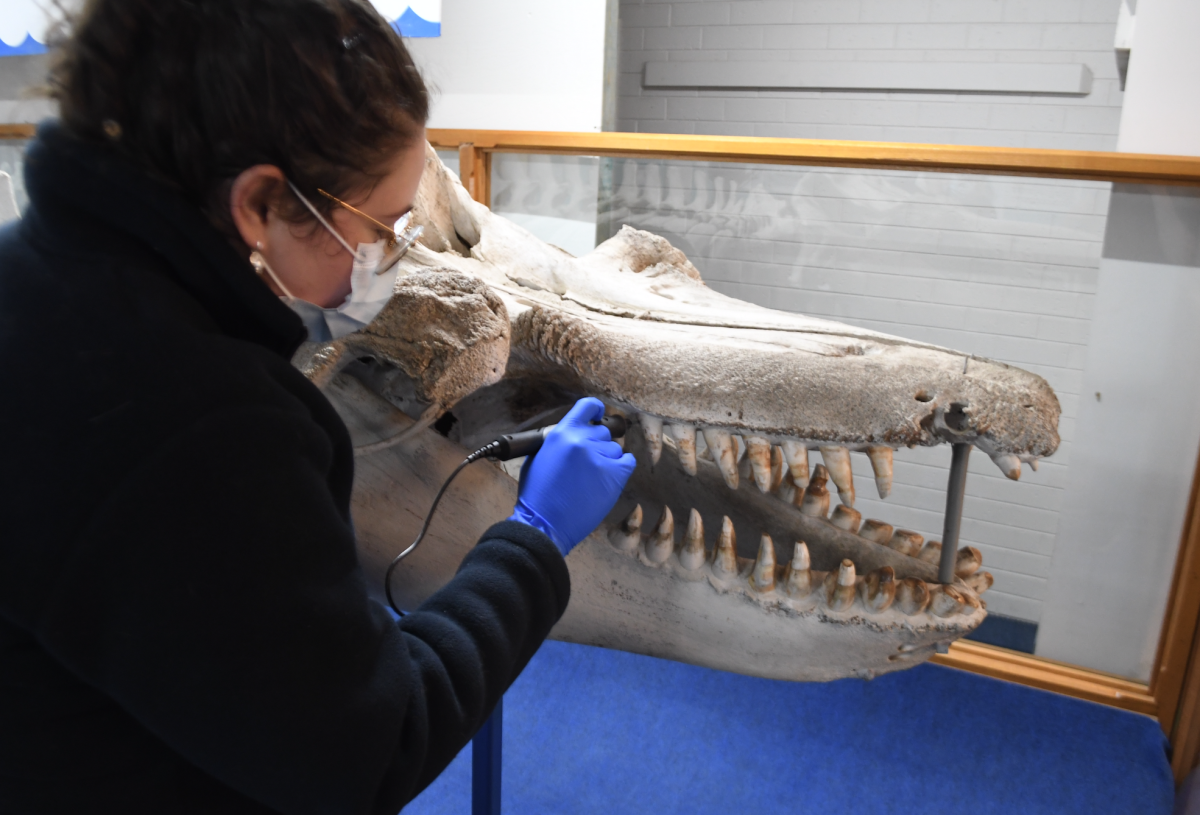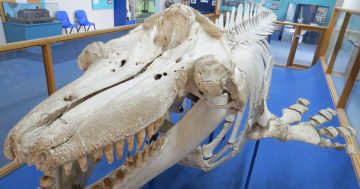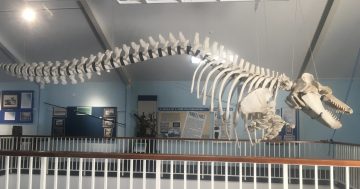
Isabelle Reeves and her team have unlocked secrets from one of the South Coast’s best-known skeletons. Photo: Charlie White.
In the 19th century, a group of killer whales would make regular visits to Eden on the NSW South Coast.
Old Tom led the group, which hunted baleen whales alongside humans and were rewarded with tongues of the killed animals for their hard work.
In 2023, the results of a recent study into the genetic history of one of the South Coast’s best-known (marine) residents have been published.
PhD candidate at Flinders University and Cetacean Research Centre Isabella Reeves said simply starting the study left her with bated breath.
“The tooth is where you normally get the most DNA, but we thought to give the jaw a go as well,” she said.
“I drilled a gram in eight hours.
“I sent Old Tom to Norway, and I then followed.”
To see what secrets Old Tom’s skeleton held, Ms Reeves worked with Professor Andrew Foote, a leading killer whale geneticist.
When Old Tom’s DNA was compared with whale populations from around the world, it was found he had a most recent common ancestor with North Atlantic, North Pacific and Australasian killer whales.
“This is thousands of years ago, if not 10,000 years ago,” she said.
“We were most interested in the question of who he relates to today.
“He has some similarity with modern New Zealand killer whales, but he was still quite different to them – he was just the most similar to them.”
The results also confirmed Old Tom was a male whale.
“That [his sex] was always up in the air because of his active role in the hunt,” she said.
“Some records suggest he lived a really long time, and we wouldn’t expect that of a male killer whale.”
But Old Tom’s genes indicate that the tale of the Twofold Bay whale group had a sad ending.
“The fact he was so different, with DNA that wasn’t shared with killer whales anywhere else in the world, suggests that his lineage are likely extinct,” Ms Reeves said.
The published paper included a foreword from Steven Holmes, a Thaua Traditional Custodian.
Ms Reeves said it was key that the Thaua people were recognised as key participants in the story of the whales in Twofold Bay.
“We’re never going to know all of it – a lot of that knowledge has been lost due to what’s happened in Australia over the past couple of hundred years,” she said.
“But I wanted to make sure that when it was broadcasted, it was the most accurate version of the story we could provide.”
The reciprocal relationship between killer whales and the whalers was a unique one, Ms Reeves said.
“I just wanted to help to add to Eden’s history and help them understand how important that relationship was in the scheme of the world.
“Nothing has been recorded like that – to that extent – anywhere else in the world.”
Ms Reeves said South Coast residents, especially those in Eden, were happy their local history was being brought to a new audience.
“I’m glad it’s got the response it has,” she said.
“I hope it gives the town more recognition from around the world.
“I’ve even had [academic] colleagues message me and say they didn’t know anything about the story until now!”
The study was published in October 2023 in Journal of Heredity and is available online.









